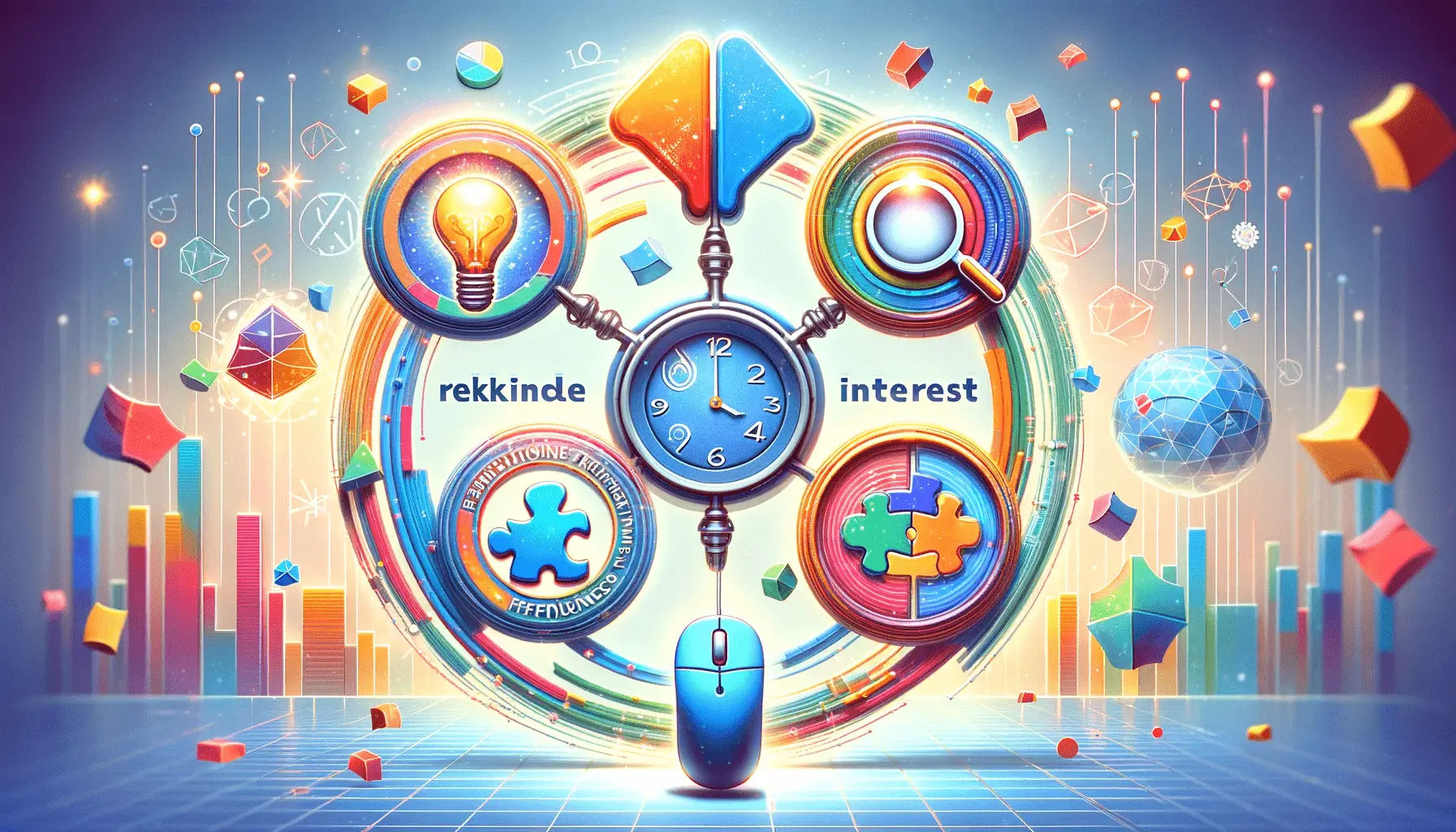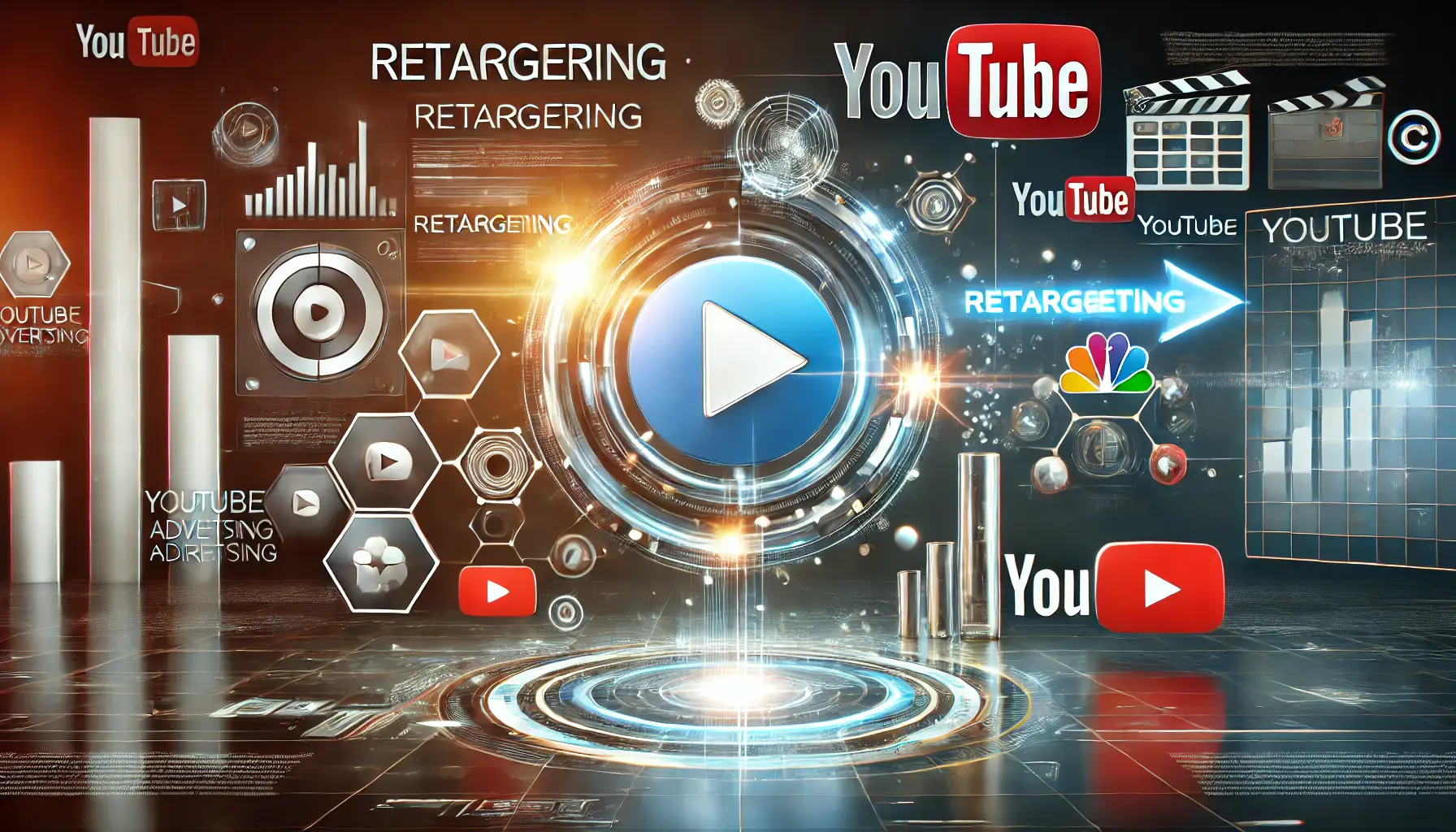Retargeting is one of the most powerful digital marketing tools, and with LinkedIn Ads, it’s an absolute game-changer.
Imagine this: a lead visits your website, looks at your content, or even watches a video but doesn’t convert.
Without retargeting techniques, that lead is lost.
However, with smart retargeting campaigns, you can bring them back and drive them toward conversion.
LinkedIn, being a professional networking site, presents unique retargeting possibilities that are not available on other social media platforms.
Because LinkedIn users are generally decision-makers and professionals actively seeking business solutions, retargeting techniques on this platform can significantly enhance your ability to close high-value leads.
But why is retargeting so crucial in LinkedIn Ads?
Let’s dive into the key reasons and common mistakes marketers make when implementing these strategies.
- Why Retargeting is Important in LinkedIn Ads
- Website Retargeting: Re-Engage Visitors Who Didn’t Convert
- Video Retargeting: Re-Engage Audiences With Dynamic Content
- Lead Form Retargeting: Re-Engage Prospects Who Showed Interest
- Event Retargeting: Re-Engage Attendees and Boost Engagement
- How to Master LinkedIn Ads Retargeting Techniques: A Strategic Guide
- Frequently Asked Questions About LinkedIn Ads Retargeting
Why Retargeting is Important in LinkedIn Ads
Retargeting within LinkedIn Ads is crucial because it allows you to reconnect with users who have previously shown interest in your business.
Unlike cold targeting, where you’re reaching out to users who may not be familiar with you, retargeting techniques focus on an audience that already knows your brand.
This results in higher engagement rates, better conversion opportunities, and more efficient ad spending.
The Power of Ad Retargeting
Retargeting is a second chance to make a lasting impression.
When potential customers interact with your brand but don’t convert immediately, it doesn’t mean they aren’t interested.
They might have been distracted, undecided, or simply needed more information.
Retargeting techniques keep your brand top-of-mind and encourage them to take the next step.
- Boosts brand recall: People tend to forget brands quickly. Retargeting ensures your brand remains visible in their feed.
- Increases conversion rates: Since these users have already expressed interest, retargeting techniques increase the likelihood of converting them when they see your ad again.
- Maximizes ad spend efficiency: Instead of targeting a cold audience, retargeting focuses on people who already have intent, reducing wasted ad spend.
How Retargeting Brings More Conversions and Engagement
Retargeting techniques drive engagement by keeping potential customers in the loop and guiding them toward conversion.
By displaying the right message at the right time, you can significantly improve your chances of turning warm leads into paying customers.
- Personalized ad experiences: Tailor your retargeting ads based on user behavior to make them more relevant.
- Strategic ad placement: LinkedIn allows you to retarget users in their feed, InMail, and even the LinkedIn Audience Network.
- Multiple touchpoints: On average, it takes 6-8 interactions before a lead converts. Retargeting techniques ensure you stay in front of your audience.
LinkedIn vs. Other Platforms: Why LinkedIn Retargeting is Unique
While Facebook and Google also offer retargeting, LinkedIn stands out because of its professional audience and advanced targeting options.
Here’s why LinkedIn retargeting techniques are particularly effective:
- High-intent audience: Unlike casual social media browsing, LinkedIn users are in a business mindset, making them easier to convert.
- Job title and industry targeting: Retargeting can be refined based on job roles, industries, and company sizes, ensuring highly relevant ads.
- High-quality ad placements: LinkedIn ads appear in professional feeds, often alongside industry-related content, making them more engaging and contextually relevant.
Common Mistakes in LinkedIn Ad Retargeting
Even though retargeting techniques are highly effective, many marketers make mistakes that limit their success.
Here are some common pitfalls to avoid:
- Retargeting too soon or too aggressively: Bombarding users with ads immediately after they visit your site can be overwhelming. Timing is key.
- Using the same ad creatives: If users didn’t convert the first time, showing them the same message repeatedly won’t work. Experiment with different ad variations.
- Not segmenting audiences: Treating all website visitors the same is a mistake. Someone who visited a pricing page has different intent than someone who read a blog post.
- Ignoring engagement metrics: If your retargeting ads aren’t performing well, analyzing engagement metrics can help refine your strategy.
Understanding the power of LinkedIn retargeting techniques is the first step toward achieving better engagement and conversions.
Now that we’ve explored why it matters, let’s look at how to make the most of LinkedIn’s retargeting potential.
In the next section, we’ll dive into website retargeting—one of the most effective methods to re-engage visitors who didn’t convert the first time.
Retargeting on LinkedIn is more effective than cold outreach because it targets users who are already familiar with your brand, leading to higher engagement and better ROI.
Website Retargeting: Re-Engage Visitors Who Didn’t Convert
Have you ever wondered why some visitors leave your site without converting?
It’s a common dilemma in online marketing.
But here’s the good news: website retargeting offers a highly effective way to re-engage such prospects.
Using the right retargeting techniques, you can bring them back and guide them through the conversion funnelThe journey a potential customer takes from awareness to taking a desired action, such as making a purchase or signing up..
How Website Retargeting Works on LinkedIn
LinkedIn provides strong solutions to re-engage your website visitors.
The cornerstone of this strategy is the LinkedIn Insight TagA JavaScript tag provided by LinkedIn that tracks website visitors for retargeting and analytics purposes.—a JavaScript tag that you place on your website.
This tag tracks visitor behavior, allowing you to create custom audiences for your retargeting campaigns.
With the Insight Tag in place, you can:
- Identify high-intent audiences: Target visitors who have shown interest in specific products or services.
- Customize ad content: Deliver personalized ads that reflect your audience’s needs and interests.
- Optimize ad spend: Focus your budget on users who are more likely to convert, ensuring the highest return on investment.
Best Practices for Segmenting Website Visitors
Effective segmentation is the key to successful retargeting.
By categorizing your site visitors based on behavior, you can display more relevant ads.
Experiment with the following segmentation strategies:
- Page-specific targeting: Segment visitors based on key pages like product information or pricing.
- Level of engagement: Differentiate visitors who spent extensive time on your website from those who only stayed briefly.
- Past interactions: Retarget visitors who have engaged with your content but haven’t converted.
With these retargeting techniques, you can tailor your LinkedIn Ads to address the unique needs and interests of each segment, making conversion more likely.
Creating Engaging LinkedIn Ads for Retargeted Audiences
Now that you’ve segmented your audience, it’s time to create ads that capture their attention and drive action.
Here are some tips for enhancing your retargeting efforts:
- Personalized messaging: Address the specific interests or pain points of each segment.
- Strong call-to-action (CTA): Encourage immediate action with prominent and clear CTAs.
- Visual appeal: Use high-quality images or videos that resonate with your target audience.
Remember, the goal is to remind your visitors of your value proposition and encourage them to return and complete their desired action.
Optimizing Ad Frequency and Budget Allocation
Getting the ad frequency just right is important.
Overexposure may lead to ad fatigueA decline in ad performance that occurs when users repeatedly see the same ad, leading to reduced engagement and effectiveness., while underexposure might result in missed opportunities.
To get the most out of your retargeting techniques:
- Set frequency caps: Limit the number of times an ad is shown to the same person within a specific period.
- Monitor performance metrics: Continuously assess metrics like click-through rates and conversions to refine your strategy.
- Allocate budget effectively: Invest more in high-performing segments to maximize ROI.
By closely monitoring these aspects, you can ensure that your LinkedIn retargeting campaigns remain engaging and effective.
Including these retargeting techniques in your LinkedIn Ads strategy enables you to effectively re-engage website visitors and turn potential interest into actual conversions.
Next, let’s explore how video retargeting can be used to further enhance engagement.
The LinkedIn Insight Tag allows businesses to track visitor activity and retarget them with relevant ads, increasing conversion chances.
Video Retargeting: Re-Engage Audiences With Dynamic Content
Did you know that video content has become one of the most powerful tools in digital marketing?
It’s engaging, bite-sized, and highly effective for delivering messages.
Leveraging video retargeting techniques on LinkedIn can significantly increase your chances of re-engaging audiences and driving conversions.
Understanding LinkedIn’s Video Retargeting Capabilities
LinkedIn offers robust tools that allow you to retarget users who have interacted with your video content.
By analyzing viewer engagement, you can create tailored audiences for your retargeting campaigns.
With such data, you can:
- Identify engaged viewers: Target users who have watched a significant portion of your videos and shown interest.
- Customize follow-up content: Deliver personalized ads that match the viewer’s level of engagement and interests.
- Enhance conversion opportunities: Engaged viewers are more likely to take the desired actions.
Best Practices for Segmenting Video Viewers
Successful video retargeting requires precise segmentation.
Categorizing your viewers based on their engagement levels allows you to deliver more specialized ads.
Use the following segmentation techniques:
- View duration: Segment viewers who watched 25%, 50%, 75%, or 97% of your video content.
- Content type: Group viewers based on the specific videos they watched to tailor follow-up messages accordingly.
- Engagement recency: Retarget viewers based on how recently they interacted with your video content.
Employing these retargeting techniques allows you to refine your LinkedIn Ads and deliver highly relevant content, increasing the likelihood of conversion.
Creating Engaging Video Content for Retargeted Audiences
Once you have segmented your audience, the next step is to create video content that resonates with them and drives action.
Below are some strategies to optimize your retargeting approach:
- Personalized messaging: Address the specific interests or pain points of each segment.
- Clear call-to-action (CTA): Encourage action through prominent and well-defined CTAs.
- Visual storytelling: Use engaging visuals and narratives that align with your target audience’s preferences.
Remember, the goal is to reinforce your value proposition and encourage viewers to take the next step in their customer journey.
Improving Video Ad Performance and Budget Allocation
Monitoring and improving your video ad performance is essential.
To maximize your retargeting efforts:
- Measure engagement metrics: Regularly analyze view rates, completion rates, and click-through rates to refine your strategy.
- Test video lengths and formats: Experiment with different video lengths and styles to determine what resonates best with your audience.
- Strategic budget allocation: Invest more in high-performing video content to maximize your return on investment.
By closely monitoring these factors, you can ensure that your LinkedIn video retargeting campaigns continue to perform effectively and remain engaging.
Incorporating these retargeting techniques into your LinkedIn Ads strategy enables you to successfully re-engage video viewers and convert their interest into meaningful actions.
Next, we’ll explore how lead form retargeting can be applied to drive maximum engagement.
Video content is an engaging way to retarget users, leveraging their previous interactions for higher conversions.
Lead Form Retargeting: Re-Engage Prospects Who Showed Interest
Have you ever had prospects start filling out your lead gen formsForms within LinkedIn Ads that allow users to submit their information directly on the platform without leaving the site. but fail to complete them?
It’s a common challenge in online marketing.
However, LinkedIn provides powerful retargeting techniques to win back such prospects and guide them toward conversion.
Understanding LinkedIn’s Lead Gen Form Retargeting Features
LinkedIn Lead Gen Forms simplify the process of capturing leads by allowing users to enter their details directly on the platform.
However, not all interactions result in immediate conversions.
By leveraging LinkedIn’s retargeting features, you can re-engage users who opened or partially completed your Lead Gen Forms but did not submit them.
With these insights, you can:
- Identify high-intent leads: Target users who interacted with your Lead Gen Forms, indicating an interest in your products or services.
- Personalize follow-up content: Deliver ads that align with a prospect’s specific needs, concerns, or challenges.
- Increase conversion chances: Engaging with these warm leads improves the likelihood of driving meaningful actions.
Best Practices for Segmenting Lead Gen Form Interactions
Successful retargeting is built on effective segmentation.
Categorizing users based on their interactions with your Lead Gen Forms allows you to display more targeted ads.
Try the following segmentation strategies:
- Form openers: Retarget users who opened your Lead Gen Form but didn’t submit it.
- Partial completers: Engage with users who started filling out the form but abandoned it midway.
- Previous submitters: Reconnect with users who submitted forms in the past but never converted into customers.
Implementing these retargeting techniques enables you to refine your LinkedIn Ads to match the specific behaviors and interests of each group, increasing conversion rates.
Creating Engaging Content for Retargeted Audiences
Once you’ve segmented your audience, the next step is to create content that captures their attention and encourages action.
Consider these strategies to optimize your retargeting efforts:
- Targeted messaging: Address specific reasons why the lead may not have completed the form and offer solutions or additional insights.
- Strong call-to-action (CTA): Encourage immediate action with clear and compelling CTAs.
- Incentives: Provide incentives such as premium content, discounts, or free trials to motivate prospects to complete the desired action.
Remember, the goal is to remind prospects of your value and encourage them to take the next step in their customer journey.
Optimizing Ad Frequency and Budget Allocation
Finding the right balance in ad frequency is crucial.
Overexposure can lead to ad fatigue, while underexposure may result in lost opportunities.
To optimize your retargeting techniques:
- Set frequency caps: Limit the number of times an ad is shown to the same user within a defined period.
- Monitor performance metrics: Regularly assess key metrics like click-through rates and conversions to fine-tune your strategy.
- Allocate budget effectively: Invest more in high-performing segments to maximize return on investment.
By carefully managing these elements, you can ensure that your LinkedIn retargeting campaigns remain effective and engaging.
Integrating these retargeting techniques into your LinkedIn Ads campaign allows you to successfully reconnect with prospects who interacted with your Lead Gen Forms, converting interest into actual conversions.
Finally, let’s explore how to measure and maximize the performance of your LinkedIn retargeting campaigns.
Retargeting users who opened but didn’t submit a Lead Gen Form can significantly boost conversions.
Event Retargeting: Re-Engage Attendees and Boost Engagement
Have you ever hosted an event where potential attendees showed interest but took no further action?
Or perhaps some prospects visited your event page but didn’t register?
Using event retargeting techniques on LinkedIn can significantly improve your ability to re-engage these audiences and drive quality conversions.
Understanding LinkedIn’s Event Retargeting Capabilities
LinkedIn provides robust tools to help you retarget individuals who interacted with your event-related content.
By analyzing attendance activity and event page interactions, you can create custom audiences for targeted retargeting campaigns.
With these capabilities, you can:
- Identify engaged attendees: Target individuals who attended your event or expressed interest but didn’t take further action.
- Personalize follow-up messaging: Deliver targeted ads that address the specific needs or interests of these prospects.
- Boost conversion opportunities: Reaching out to warm leads increases the chances of driving meaningful actions.
Best Practices for Segmenting Event Interactions
Effective segmentation is key to successful retargeting.
Grouping users based on their engagement with your events allows you to serve more relevant ads.
Consider these segmentation strategies:
- Event attendees: Retarget users who attended your event but haven’t taken the next step.
- Event page visitors: Engage users who visited your event page but didn’t sign up.
- Content engagers: Target users who interacted with your event-related content, such as posts or videos, but didn’t convert.
By applying these retargeting techniques, you can make your LinkedIn Ads more relevant to each group’s behaviors and interests, increasing the likelihood of conversions.
Developing Effective Content for Retargeted Event Audiences
Once you’ve segmented your audience, the next step is to create content that captures their attention and drives action.
Here are some strategies to enhance your retargeting:
- Personalized messaging: Address the specific interests or pain points of each segment with solutions or additional information.
- Strong call-to-action (CTA): Encourage immediate action with clear and compelling CTAs.
- Incentives: Offer exclusive content, special promotions, or early access to future events to drive engagement.
Keep in mind that your goal is to remind your audience of the value your brand offers and encourage them to continue their journey with you.
Optimizing Ad Frequency and Budget Allocation
Finding the right balance in ad frequency is essential.
Excessive exposure can lead to ad fatigue, while limited exposure might result in missed opportunities.
To optimize your retargeting techniques:
- Set frequency caps: Limit how many times an ad is shown to the same user within a specific timeframe.
- Monitor performance metrics: Track key metrics such as click-through rates and conversions to refine your strategy.
- Allocate budget wisely: Invest more in high-performing segments to maximize your return on investment.
By effectively managing these factors, you can ensure that your LinkedIn retargeting campaigns remain impactful and engaging.
Implementing these retargeting techniques within your LinkedIn Ads strategy allows you to successfully re-engage event attendees and turn their interest into real conversions.
Next, let’s explore how to monitor and optimize the performance of your LinkedIn retargeting campaigns.
Retargeting event attendees and interested users helps businesses maintain engagement post-event.
How to Master LinkedIn Ads Retargeting Techniques: A Strategic Guide
Retargeting techniques have transformed LinkedIn Ads, enabling marketers to reconnect with high-intent users and drive significant conversions.
By leveraging strategic touchpoints, businesses can enhance brand awareness, deepen engagement, and maximize their ad spend efficiency.
In this article, we explored the most effective LinkedIn retargeting techniques, each designed to target specific user behaviors and interactions.
The Power of LinkedIn Retargeting: Why It Matters
Unlike other platforms, LinkedIn offers unparalleled access to a highly professional audience, making it the ideal space for businesses targeting decision-makers and industry influencers.
Retargeting techniques allow brands to stay visible to users who have already engaged with their content, helping guide them smoothly toward conversion.
These techniques help by:
- Building brand awareness: Ensuring your business stays in front of potential customers.
- Maximizing conversions: Engaging warm audiences who are already familiar with your brand.
- Optimizing ad spend: Targeting users most likely to take action, improving ROI.
Key LinkedIn Retargeting Techniques Explored
We covered four powerful LinkedIn retargeting techniques that businesses can use to re-engage potential customers effectively:
- Website Retargeting: With the LinkedIn Insight Tag, businesses can track and retarget users who visited their website but didn’t convert. This ensures warm leads continue seeing relevant LinkedIn Ads tailored to their interests.
- Video Retargeting: By leveraging video engagement data, businesses can retarget users based on how much of a video they watched. This approach nurtures interested audiences with personalized messaging.
- Lead Form Retargeting: Many users begin filling out a Lead Gen Form but abandon it before submission. Retargeting these users with relevant follow-up content can significantly boost conversion rates.
- Event Retargeting: Whether targeting event attendees or visitors to an event page, this method ensures that users who engaged with your event-related content are encouraged to take further action.
Best Practices for Effective LinkedIn Retargeting
To maximize the impact of your LinkedIn retargeting techniques, follow these best practices:
- Segment Your Audience: Tailor ads for different audience groups based on their interactions with your content.
- Use Personalized Messaging: Craft ads that directly address the needs and interests of your audience.
- Set Frequency Caps: Prevent ad fatigue by limiting how often users see your ads.
- Track Performance Metrics: Regularly monitor key metrics such as click-through rates and conversions to refine your strategy.
- Allocate Budget Wisely: Invest more in high-performing audience segments to optimize your return on investment.
Final Thoughts: Take Your LinkedIn Ads Strategy to the Next Level
LinkedIn retargeting techniques empower marketers to reconnect with users who have already shown interest in their brand.
Whether through website visits, video views, form submissions, or event interactions, retargeting ensures that warm leads do not slip away.
By implementing a well-planned retargeting strategy, businesses can nurture prospects, boost engagement, and ultimately drive more conversions.
As digital advertising evolves, mastering retargeting techniques will become essential for staying competitive.
Start optimizing your LinkedIn Ads retargeting strategy today, and transform potential interest into lasting business success.
Retargeting is an essential LinkedIn Ads strategy, ensuring continuous brand engagement and higher conversion rates.
Enjoyed the article? Let its author handle your social media ads. Visit our service page to get started!
Frequently Asked Questions About LinkedIn Ads Retargeting
LinkedIn retargeting allows advertisers to re-engage users who have previously interacted with their brand on LinkedIn, such as website visitors or video viewers, by showing them targeted ads.
By installing the LinkedIn Insight Tag on your website, you can track visitor behavior and serve targeted ads to those visitors when they are on LinkedIn, reminding them to return or convert.
The LinkedIn Insight Tag is a JavaScript tag placed on your website that enables tracking of visitor activity to build matched audiencesA LinkedIn Ads feature that enables advertisers to create custom audience segments based on website visits, account targeting, and other factors. for retargeting campaigns on LinkedIn.
Yes, LinkedIn allows you to create an audience of members who have viewed your video content, enabling you to retarget them with relevant ads to increase engagement and conversions.
LinkedIn retargeting is highly effective for B2B marketers, as it targets professionals and decision-makers, leading to more qualified leads and higher conversion rates compared to other platforms.
Benefits include increased brand awareness, higher conversion rates, improved ROI on ad spend, and the ability to nurture leads with relevant and personalized content.
To set up a retargeting campaign, add the LinkedIn Insight Tag to your website, create matched audiences based on visitor behavior, and design tailored ads targeting those specific audiences.
A good click-through rate (CTR) for LinkedIn retargeting ads is typically above 1%, which indicates successful engagement with your target audience.
Yes, small businesses can utilize LinkedIn retargeting by targeting a professional audience, building brand awareness, and improving conversion opportunities through strategic ad placements.










